 Pensacola is the western most city in the Florida Panhandle. Pensacola is a sea port on Pensacola Bay which is protected by the barrier island of Santa Rosa and connects to the Gulf of Mexico. A large United States Naval Air Station, the first in the United States, is located southwest of Pensacola near Warrington. It is the base of the Blue Angels flight demonstration team and the National Naval Aviation Museum. The main campus of the University of West Florida is situated north of the city center. Pensacola is the western most city in the Florida Panhandle. Pensacola is a sea port on Pensacola Bay which is protected by the barrier island of Santa Rosa and connects to the Gulf of Mexico. A large United States Naval Air Station, the first in the United States, is located southwest of Pensacola near Warrington. It is the base of the Blue Angels flight demonstration team and the National Naval Aviation Museum. The main campus of the University of West Florida is situated north of the city center.
The area was originally inhabited by Muskogean peoples. The Pensacola people lived there at the time of European contact, and Creek people frequently visited and traded from present-day southern Alabama. Spanish explorer Tristen de Luna founded a short-lived settlement in 1559. In 1698 the Spanish established a presidio in the area, from which the modern city gradually developed. The area changed hands several times as European powers competed in North America. During Florida's British rule (1763â─⌠1789), fortifications were strengthened.
It is nicknamed "The City of Five Flags" due to the five governments that have ruled it during its history: the flags of Spain (Castile), France, Great Britain, the United States of America and the Confederate States of America. Other nicknames include "World's Whitest Beaches" (due to the white sand of Florida panhandle beaches), "Cradle of Naval Aviation", "Western Gate to the Sunshine State", "America's First Settlement", "Emerald Coast", "Redneck Riviera", "Red Snapper Capital of the World", and "P-Cola". |
|
The two RV Gypsies took the 2 hour Segway tour of Downtown Pensacola and thoroughly enjoyed it. This was the 13th time the two RV Gypsies have taken a Segway tour of a city. Jen, the guide, is majoring in history, so she was very knowledgeable. Reservations are required. Groups are limited to 5 at a time, unless a one-week notice is given. For more specific Segway information, go to their website www.EmeraldCoastTours.net. Photos below are of various places in Pensacola, along with some Pensacola history, plus photos of the two RV Gypsies on their Segway tour. |
|
|
Al Fresco is the newest hot spot in Downtown Pensacola. Nestled between 14 palm trees in the heart of Pensacola on Palafox and Main Streets, there are 5 restaurants including Shux Oyster Bar as the anchor and 4 Airstream Restaurants including Z Taco Fresh Mex, Gouda Stuff Gourmet Melts, Gunshot BBQ, and the Fusion World. Al Fresco is the perfect place to have a meal or a glass of wine or beer before a baseball game, festival or to any Downtown event. Patrons can enjoy dining outdoors on tables, chairs and umbrellas with beautiful landscaping and exciting downtown scenery. |
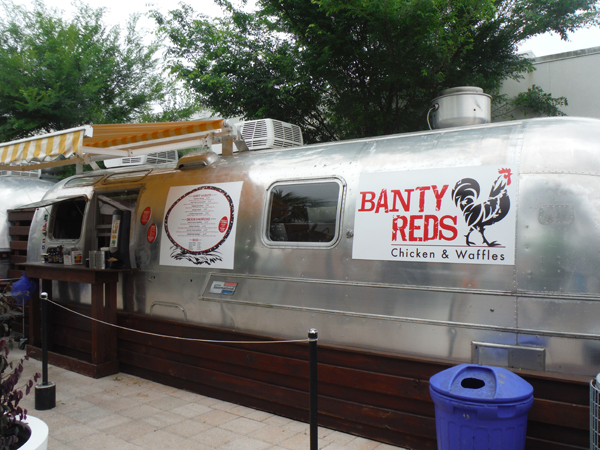 |
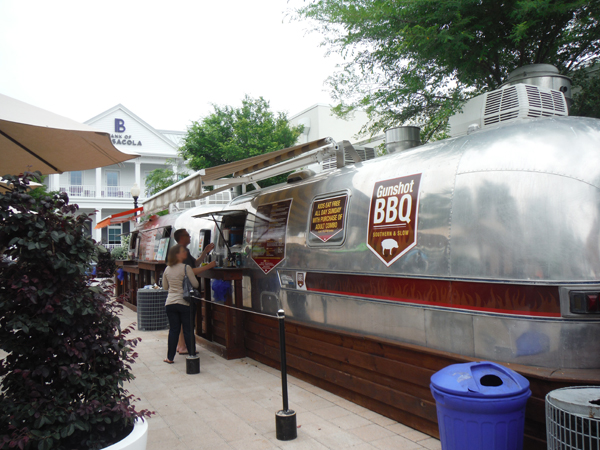 |
|
Palafox Pier - Following the successful lead of other small and large cities across the country, Pensacola has identified the Palafox Pier as a downtown destination magnet. The $12 million mixed-use development at the southern end of Palafox Street on the Palafox Pier includes a 92-slip marina, and two upland buildings: the 7,200 square feet Harbormaster Building that is completely leased and the Icehouse Building with 21,000 square feet that is complete and occupied by Network Telephone and Merrill Lynch. |
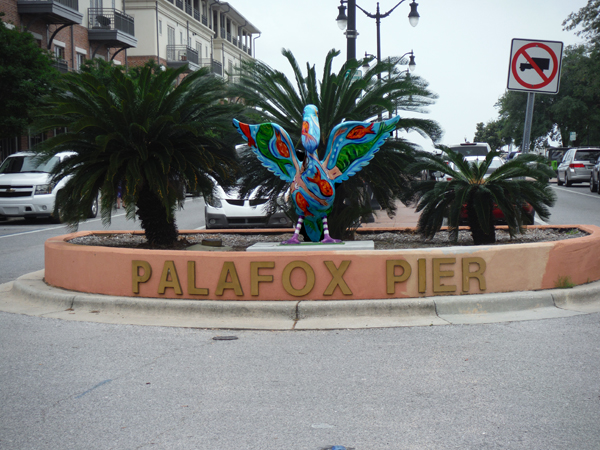 |
Memorial Monument in Downtown Pensacola at Palafox Pier: The sculpture shown below is a tribute to The Five Flags City, Pensacola. Around the base of the sculpture, there is historic information related to the times when other countries were the rulers of the land which is now Pensacola. |
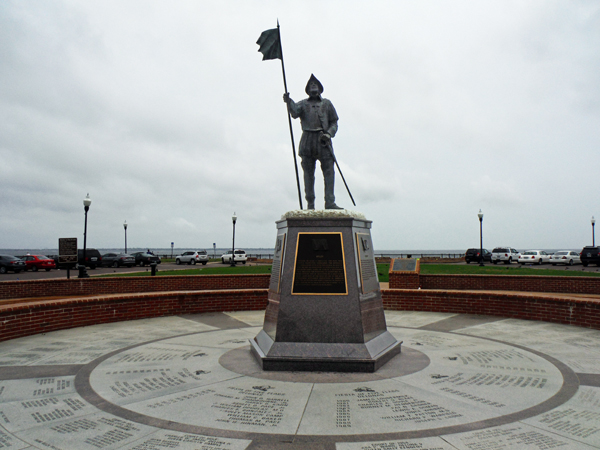 |
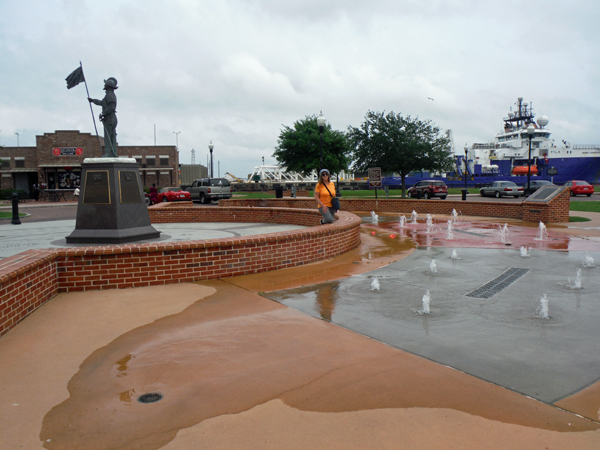 |
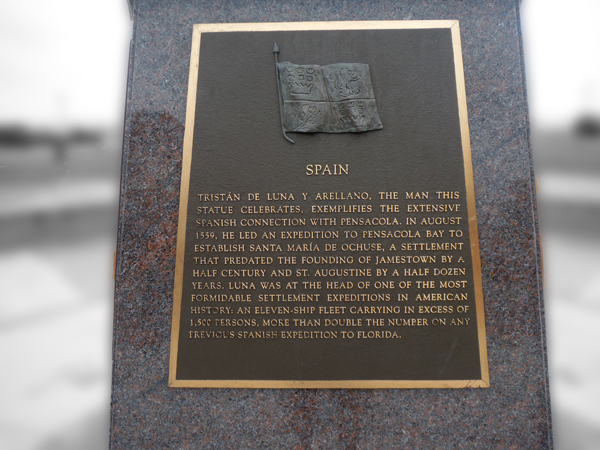 |
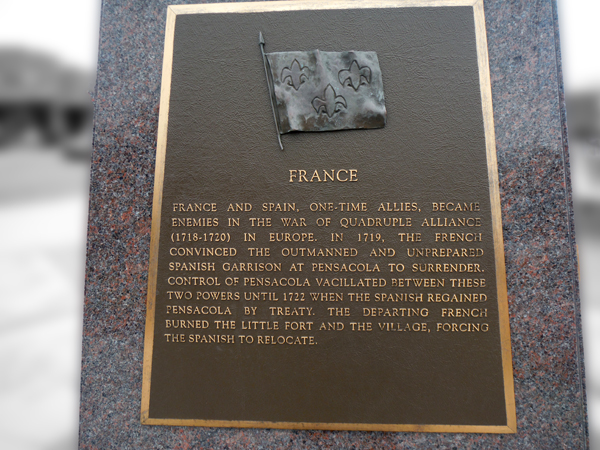 |
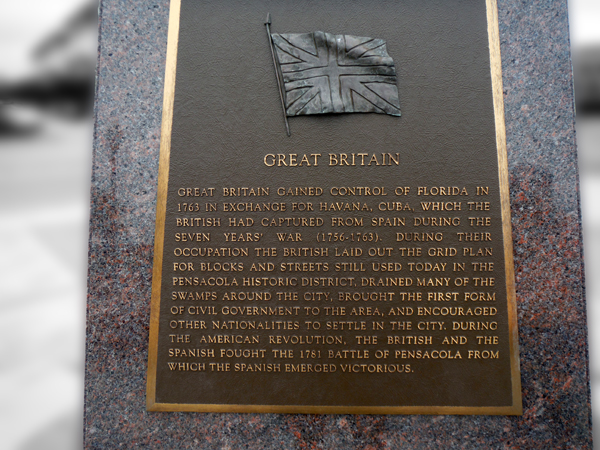 |
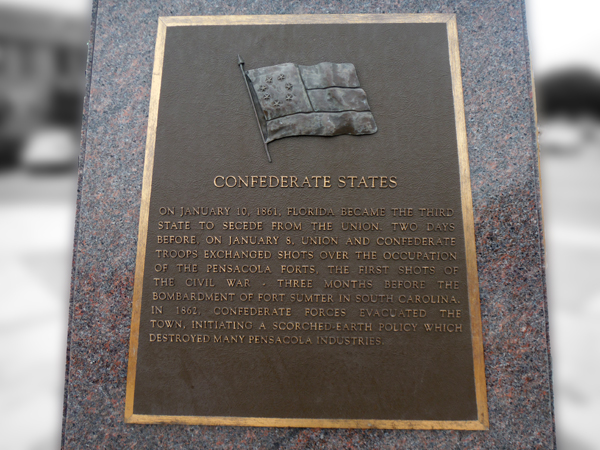 |
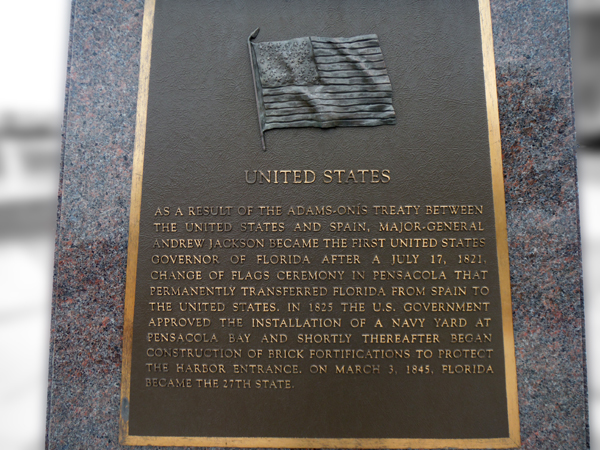 |
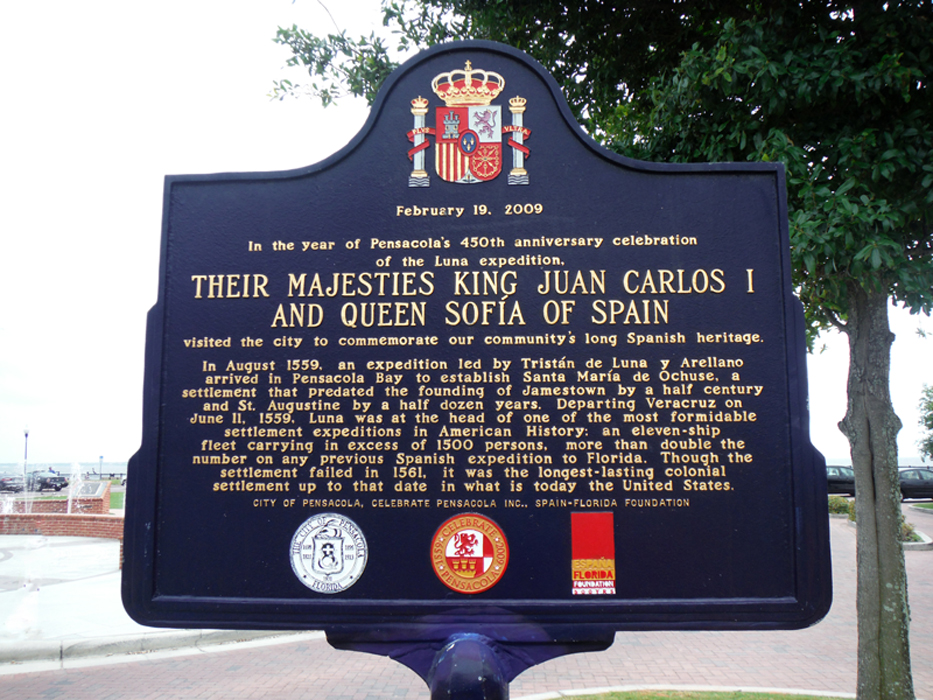 |
Below: The Segway tour stopped
at another park and the tour guide told the two RV Gypsies a lot about
the Naval history of Pensacola. |
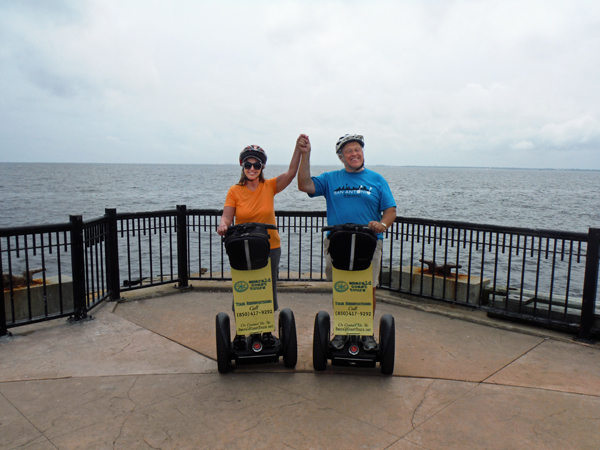 |
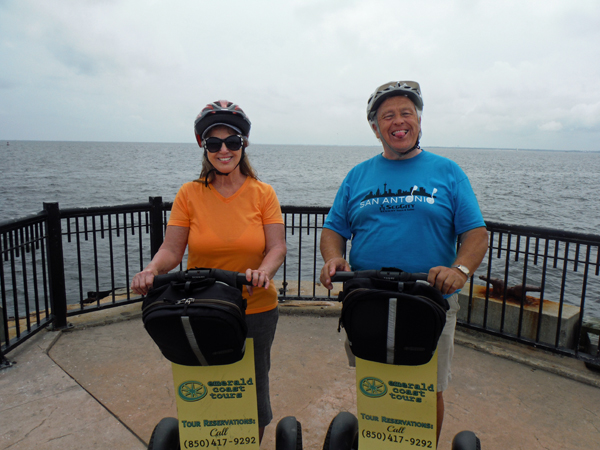 |
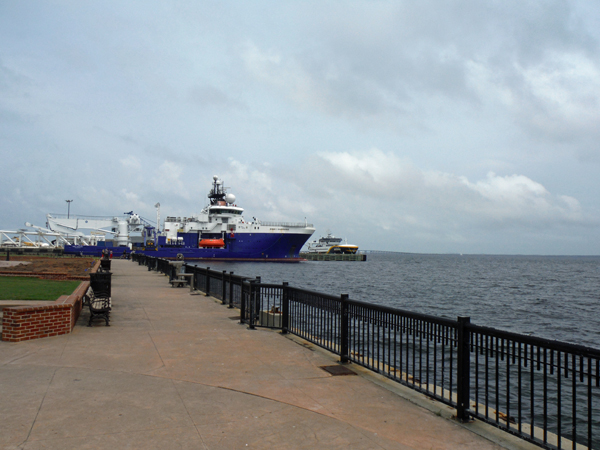 |
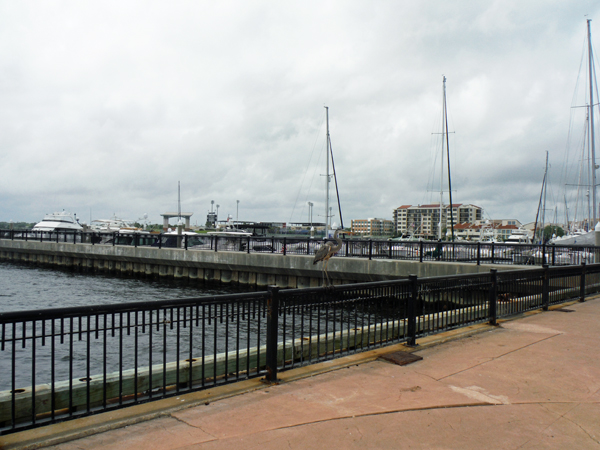 |
Below: General Andrew Jackson
Memorial in the Plaza Ferdinand VII |
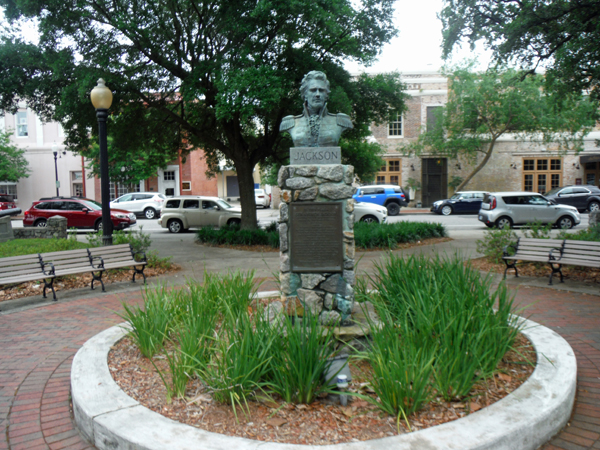 |
Below: An obelisk dedicated
to William Dudley Chipley with his biography inscribed in the base of
the obelisk.
Chipley (June 6, 1840- December 1, 1897) was an American railroad tycoon
and statesman. He created two railroads in the Florida Panhandle and
served one term as mayor of Pensacola, Florida and in the Florida State
Senate. |
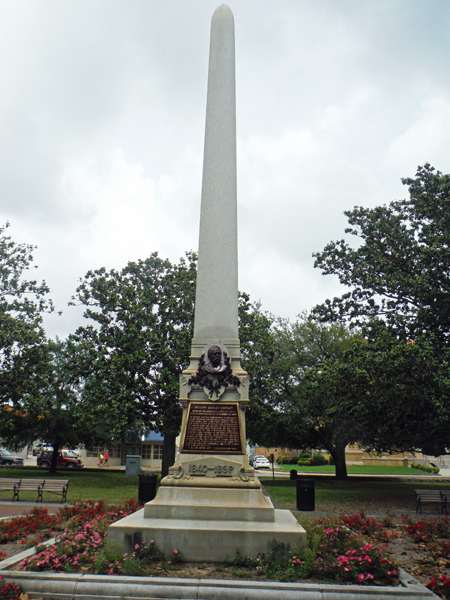 |
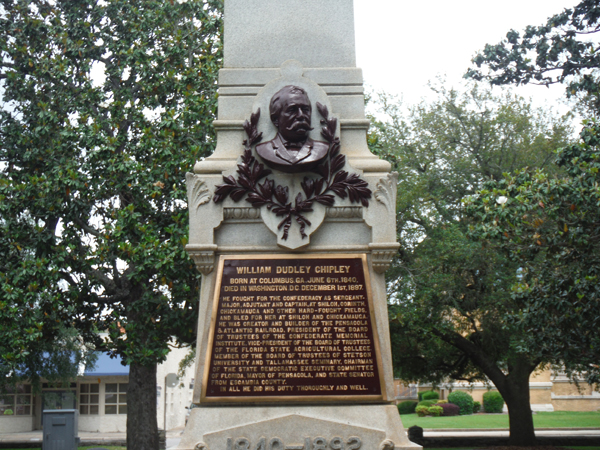 |
Below: The T. T. Wentworth Jr. Florida State Museum is a museum of history located at 330 Jefferson Street in the Plaza Ferdinand VII in Pensacola, Florida. It is part of the Historic Pensacola Village museum complex. The building, reminiscent of the Alamo mission style, was built in 1907 as the Pensacola City Hall and served as such until 1985 when the present city hall was built at 180 Governmental Center, also known as 222 West Main Street. In 1989, the building was listed as the Pensacola City Hall in A Guide to Florida's Historic Architecture, published by the University of Florida Press. |
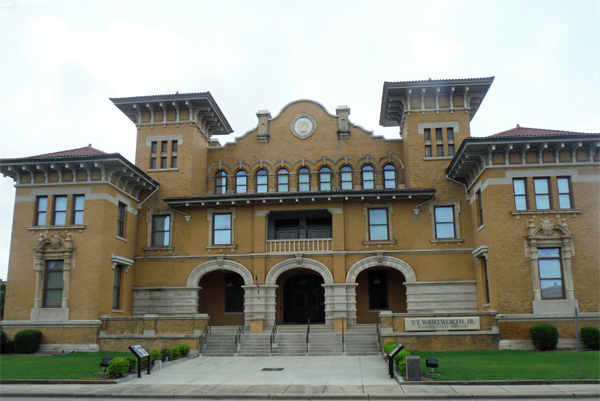 |
Below: A map of how the British
Fort of Pensacola used to look and some history. |
 In early 1990, an unprecedented concentration of Colonial features and artifacts associated with the Colonial forts in Pensacola were uncovered as the pavement was being removed from streets in the Historic District of Pensacola for an urban renewal project. Among these Colonial features were a British field cannon, the architectural remnants near the main gate of the British fort (1763-1781), stockade lines and wall trenches of the later Spanish fort (1781-1821) and the first complete architectural foundation of an early Spanish period (1752-1763) building. People got excited as they realized that the gate through which Andrew Jackson walked (on his way to meet with the Spanish Governor Callava for the transfer of the territory from Spain to the United States) on July 17, 1821 was now below their feet. Hundreds of volunteers helped Dr. Bense, John Phillips, and archaeology students from UWF in the excavations. After minimal damage to the archaeological remains, the site was reburied for protection. In early 1990, an unprecedented concentration of Colonial features and artifacts associated with the Colonial forts in Pensacola were uncovered as the pavement was being removed from streets in the Historic District of Pensacola for an urban renewal project. Among these Colonial features were a British field cannon, the architectural remnants near the main gate of the British fort (1763-1781), stockade lines and wall trenches of the later Spanish fort (1781-1821) and the first complete architectural foundation of an early Spanish period (1752-1763) building. People got excited as they realized that the gate through which Andrew Jackson walked (on his way to meet with the Spanish Governor Callava for the transfer of the territory from Spain to the United States) on July 17, 1821 was now below their feet. Hundreds of volunteers helped Dr. Bense, John Phillips, and archaeology students from UWF in the excavations. After minimal damage to the archaeological remains, the site was reburied for protection.
In 1993, excavations resumed around Ferdinand Plaza and the T.T. Wentworth Museum in downtown Pensacola as Phase II of the Pensacola Archaeological Trail began. This is the area of the far western side of the British Fort of Pensacola. When the British took West Florida from Spain in 1763, they began to build their own fort around the run down Spanish Presidio in the Plaza Ferdinand. Present day Seville Square was a cleared area just to the east of the British fort and Ferdinand Plaza of today was the open area to the west of the British fort. The evolution of the British Fort of Pensacola may be seen through maps ranging from 1763, just after occupation by the British, until 1778, only three years before the Spanish recaptured Pensacola. |
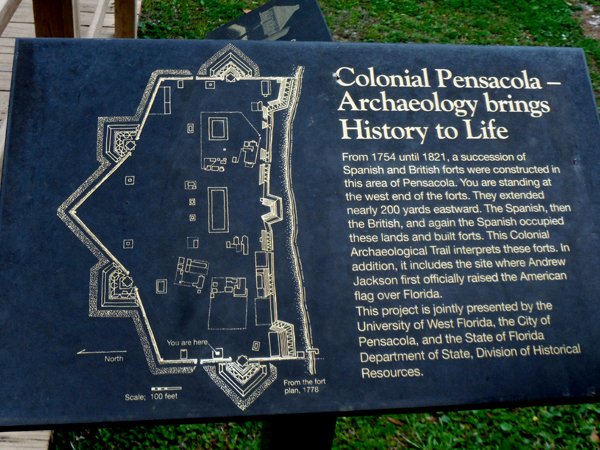 |
Below: The Segway tour continued
on from Downtown Pensacola through Historic Pensacola. |
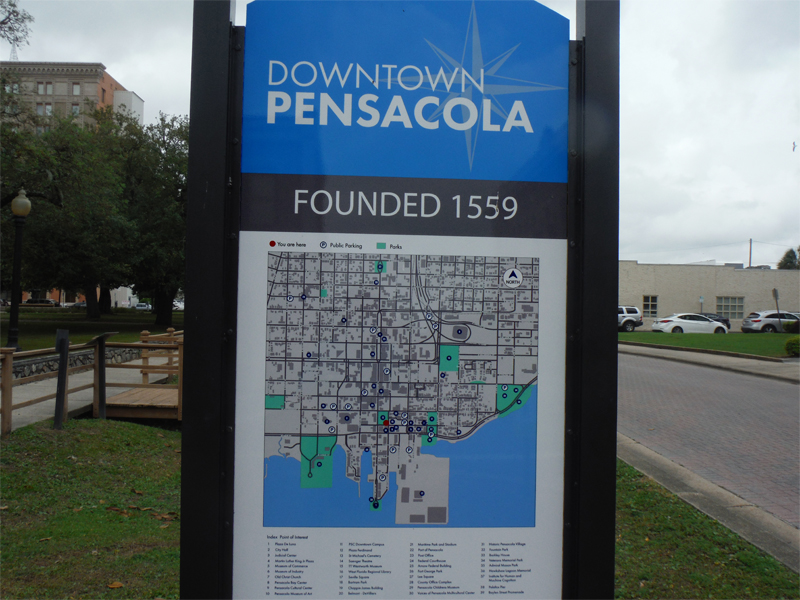 |
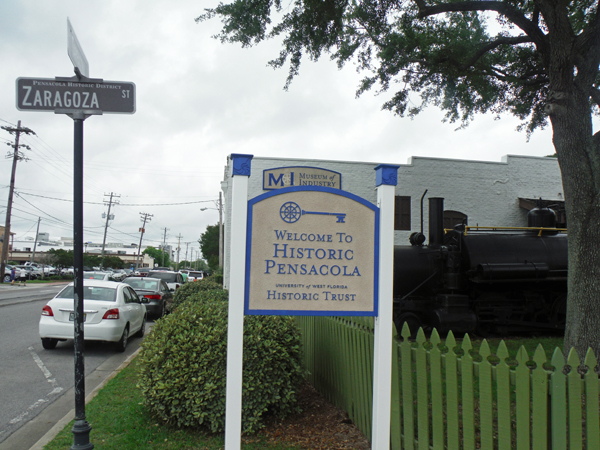 |
Below: A Fountain in front
of the Pensacola Post Office |
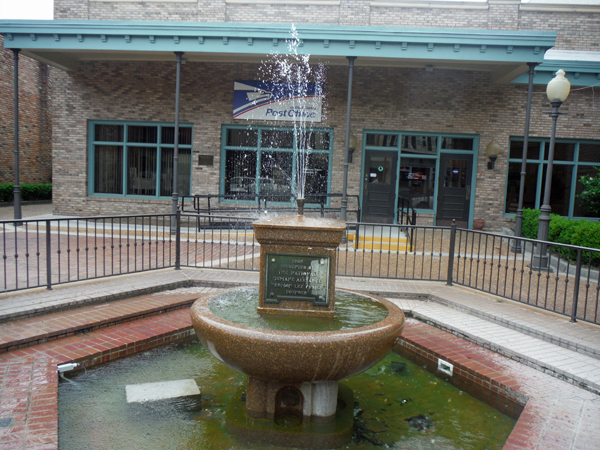 |
Below: Cannons and a bell
in the old courthouse cupola clock at the Escambia County Courthouse. |
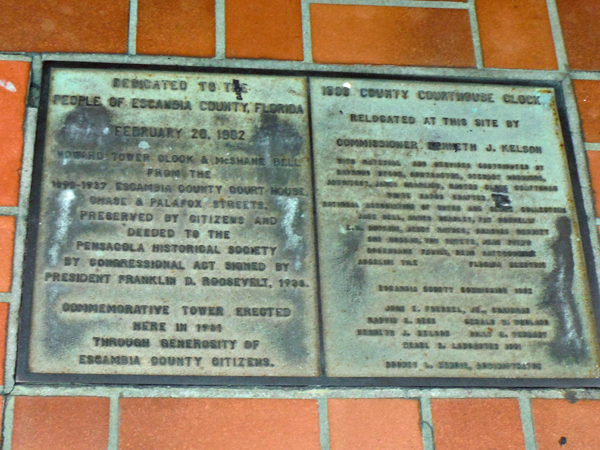 |
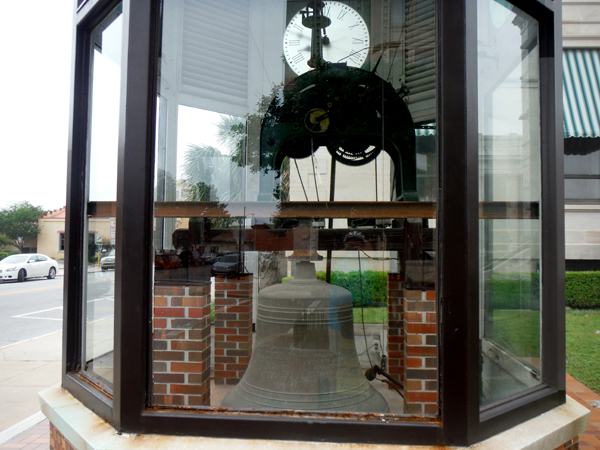 |
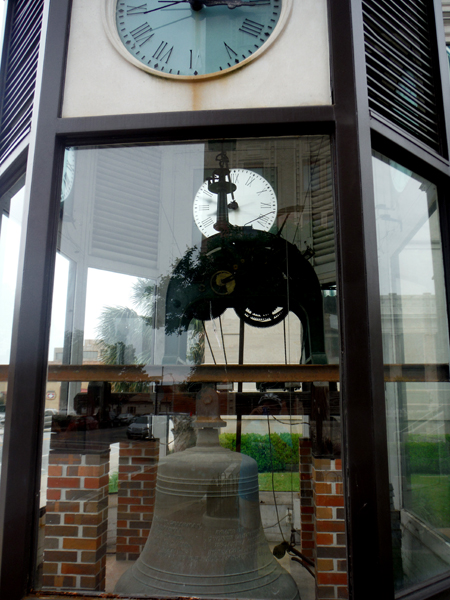 |
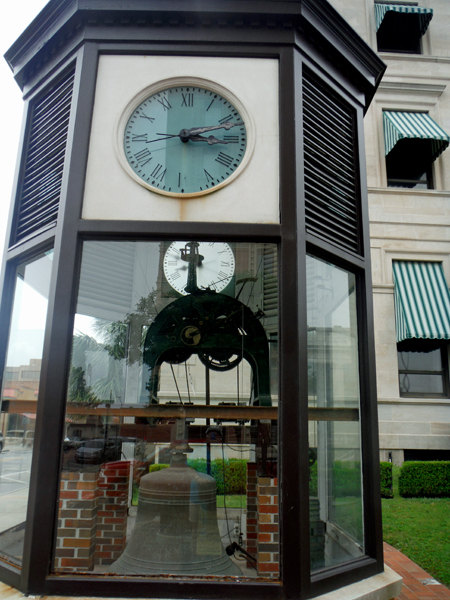 |
Below: A Lost Landmark - The Panton House of Pensacola. The house shown below is a small-model of the house where Alexander McGillivray, an Indian Chief was found buried under the floorboards. |
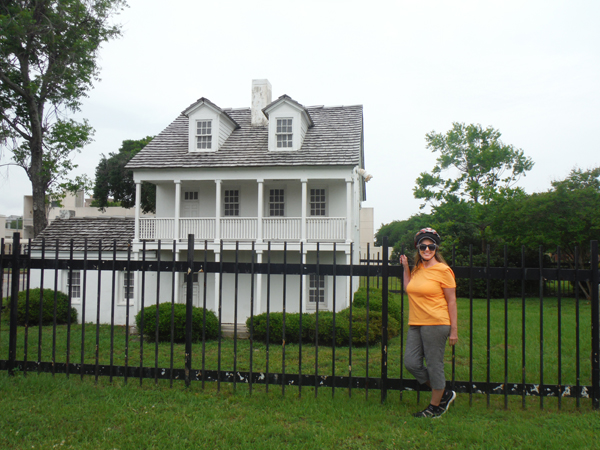 |
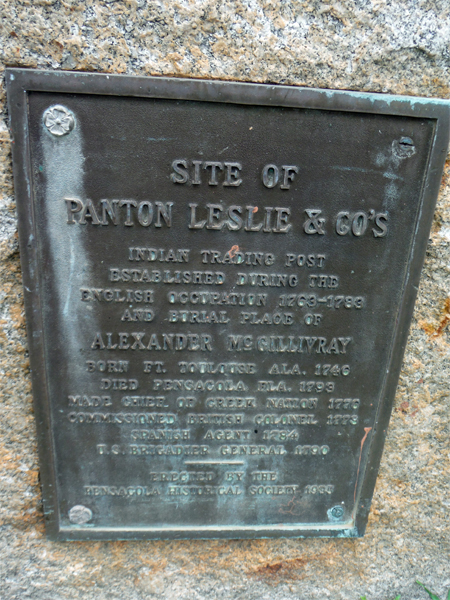 |
Below: The two RV Gypsies
got some free-time free-wheeling on their Segways around the pier and
around the stadium of The Pensacola Blue Wahoos, a minor league baseball
team. |
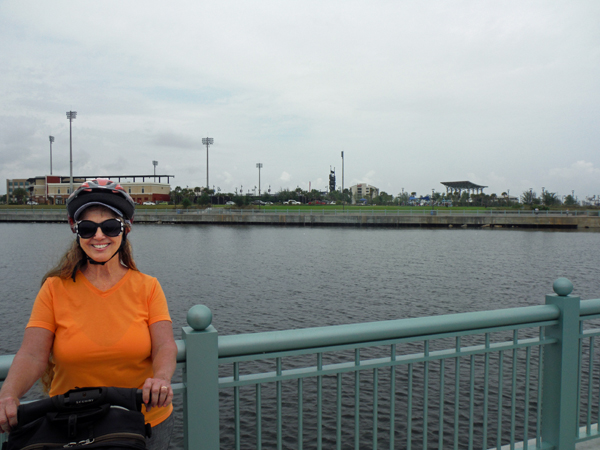 |
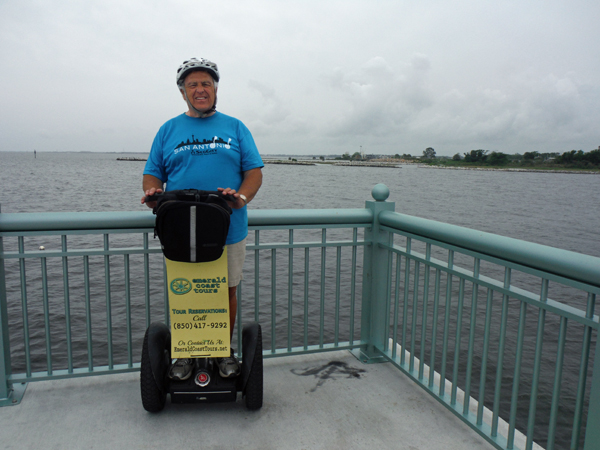 |



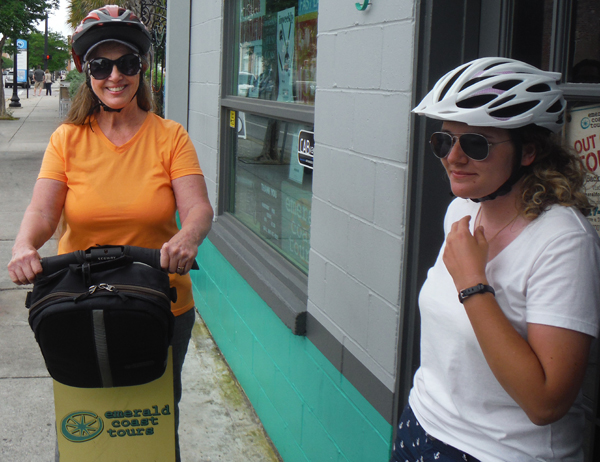
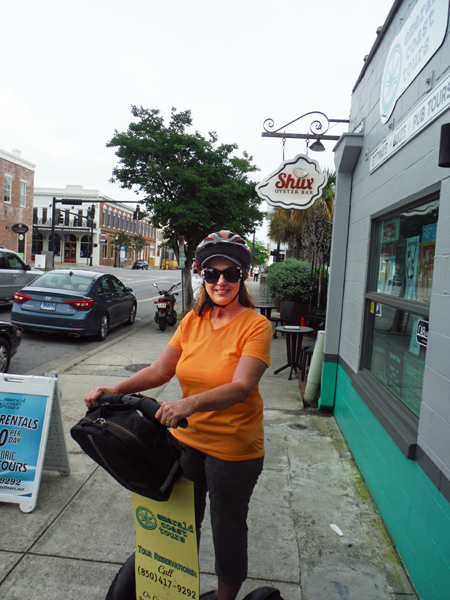


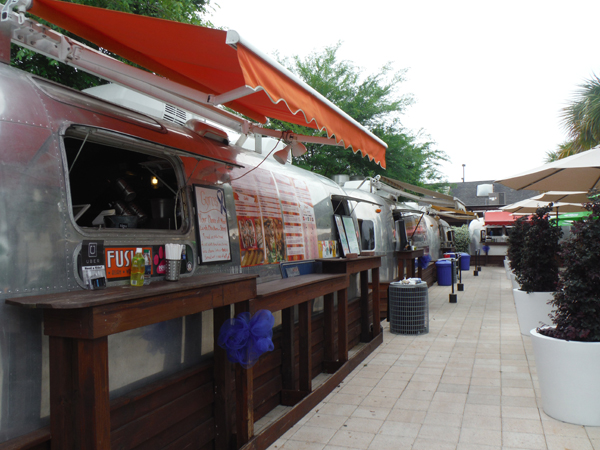





























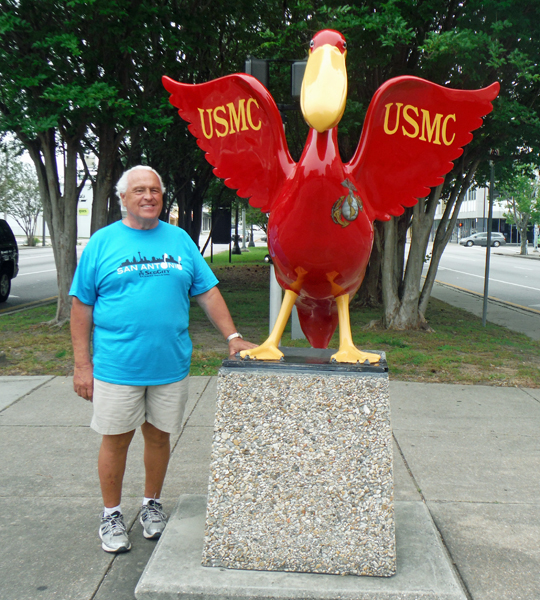
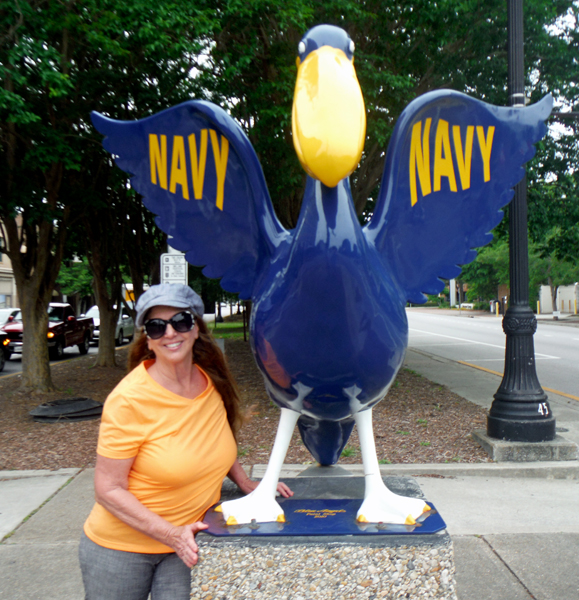
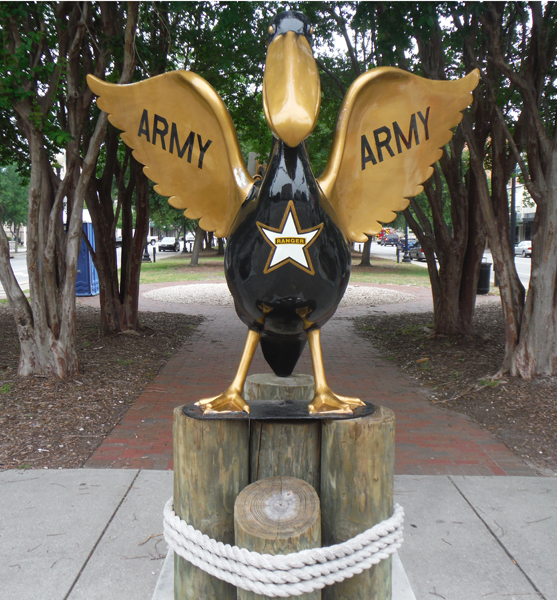
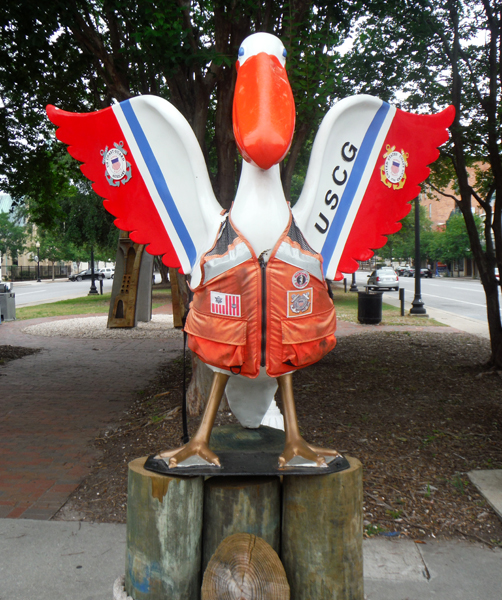
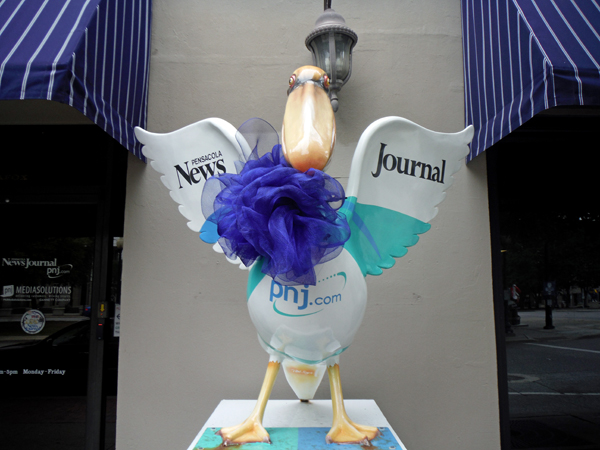
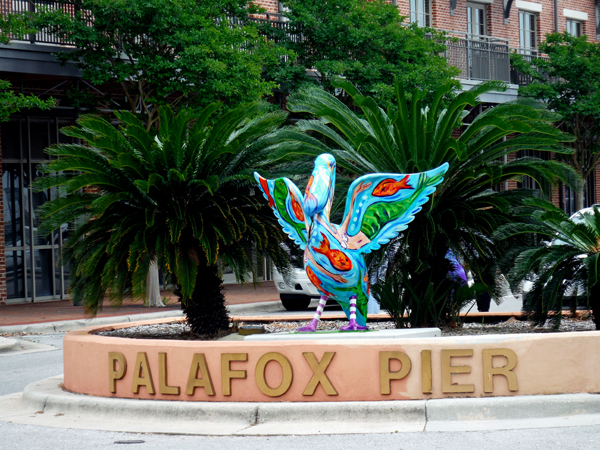
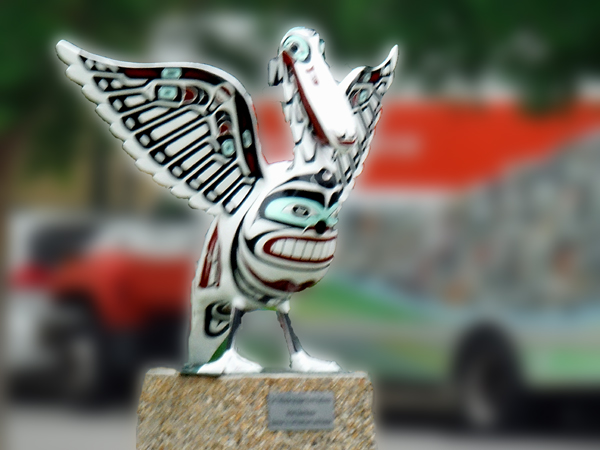
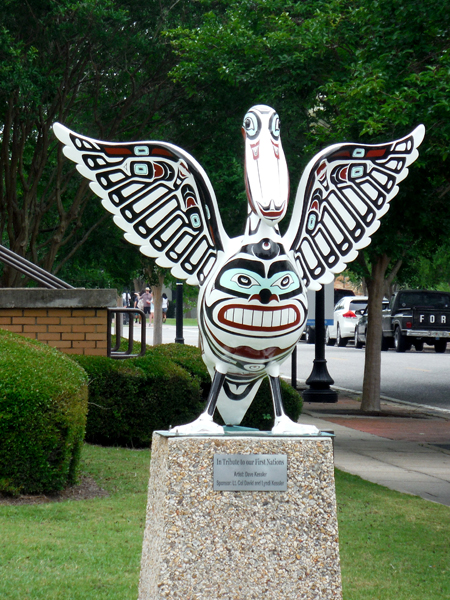
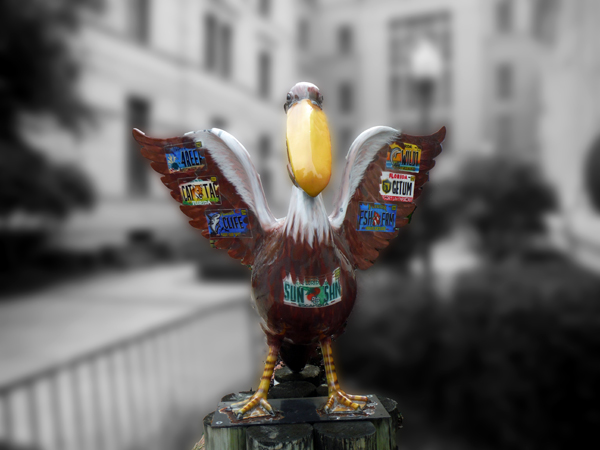
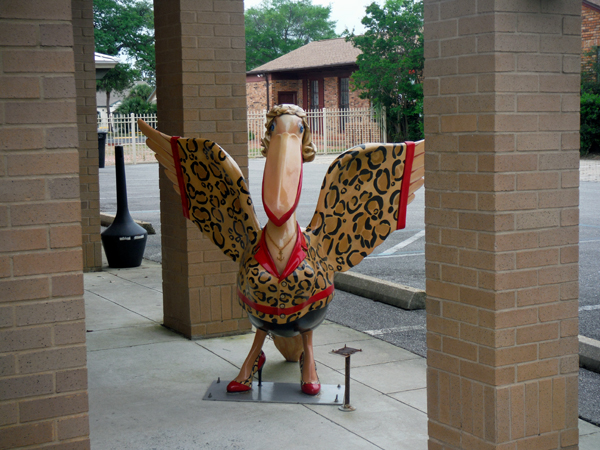
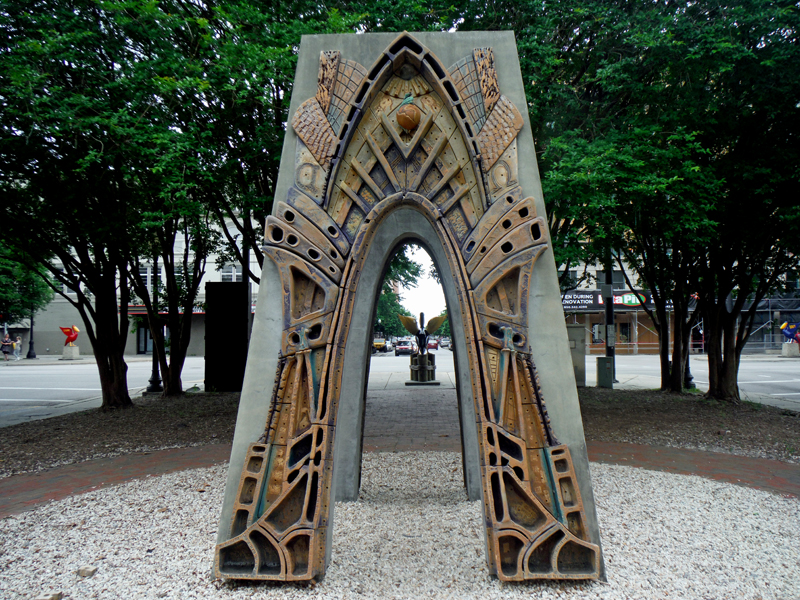
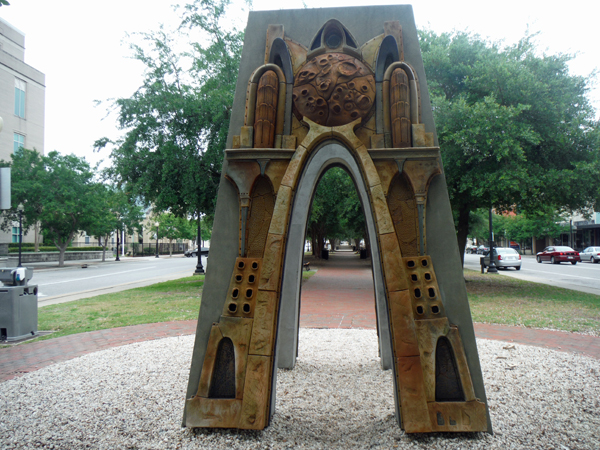
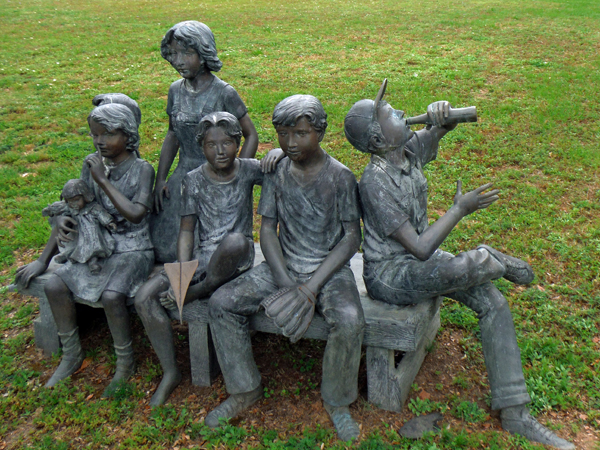

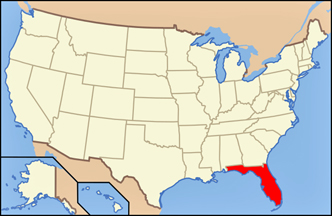
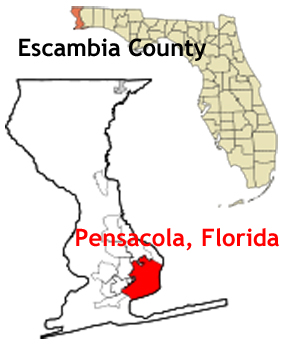
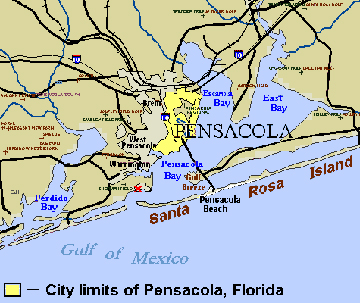
 Pensacola is the western most city in the Florida Panhandle. Pensacola is a sea port on Pensacola Bay which is protected by the barrier island of Santa Rosa and connects to the Gulf of Mexico. A large United States Naval Air Station, the first in the United States, is located southwest of Pensacola near Warrington. It is the base of the Blue Angels flight demonstration team and the National Naval Aviation Museum. The main campus of the University of West Florida is situated north of the city center.
Pensacola is the western most city in the Florida Panhandle. Pensacola is a sea port on Pensacola Bay which is protected by the barrier island of Santa Rosa and connects to the Gulf of Mexico. A large United States Naval Air Station, the first in the United States, is located southwest of Pensacola near Warrington. It is the base of the Blue Angels flight demonstration team and the National Naval Aviation Museum. The main campus of the University of West Florida is situated north of the city center. AFTER
AFTER 























